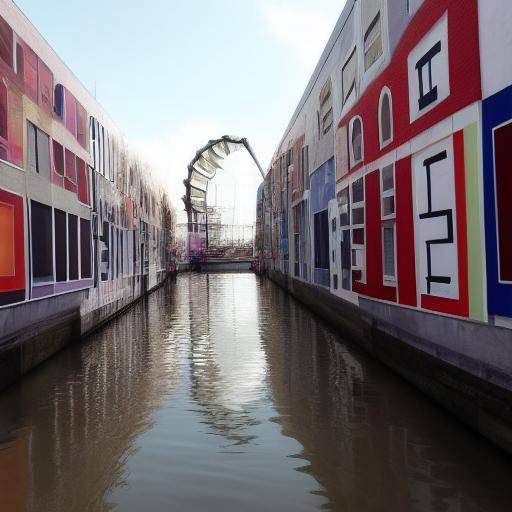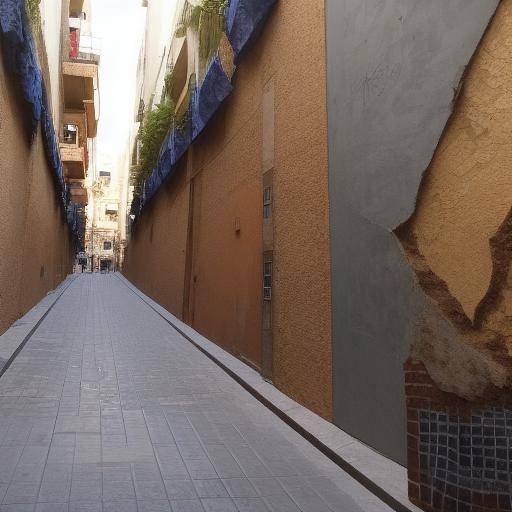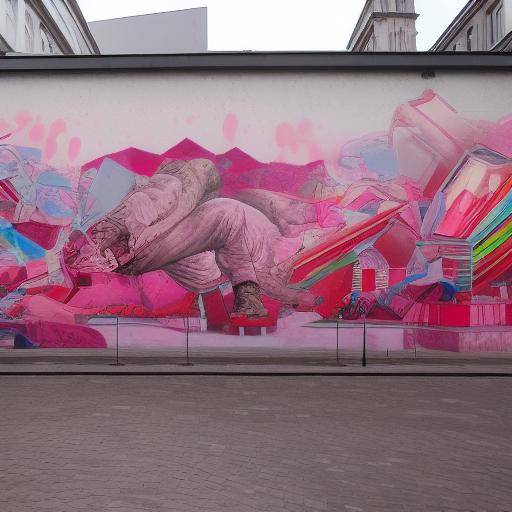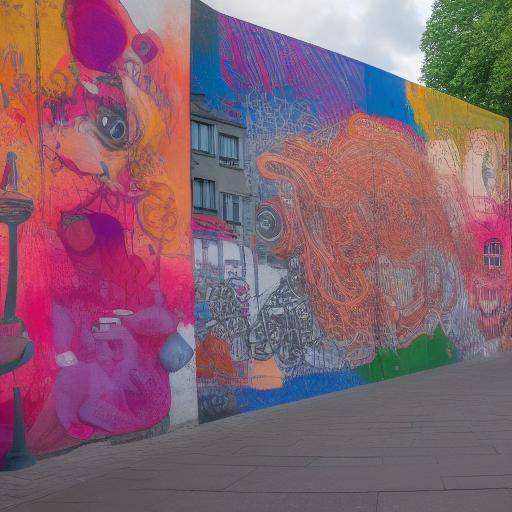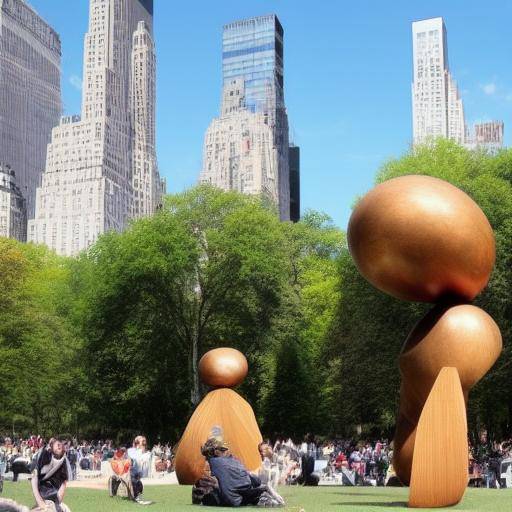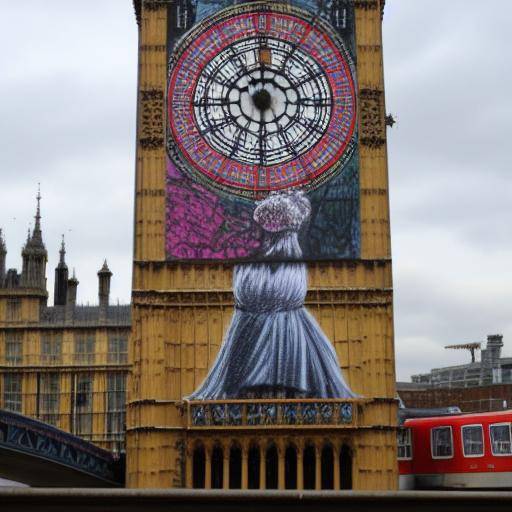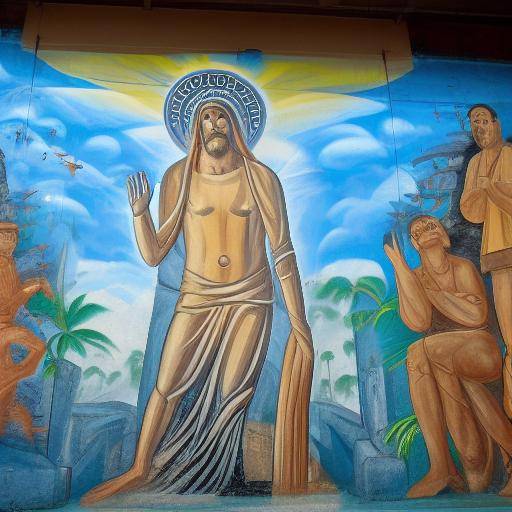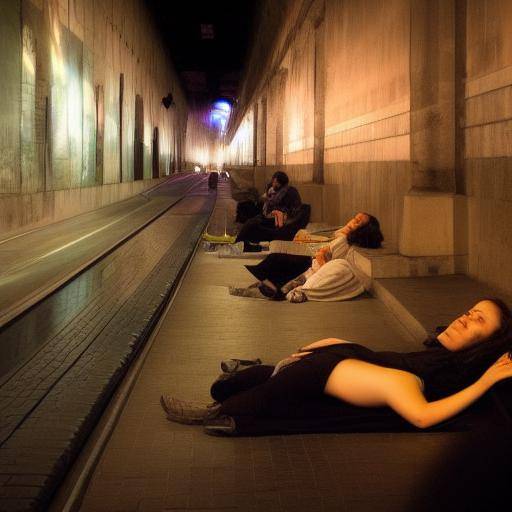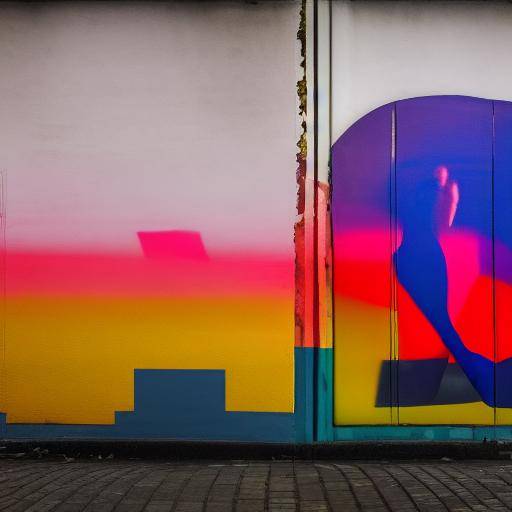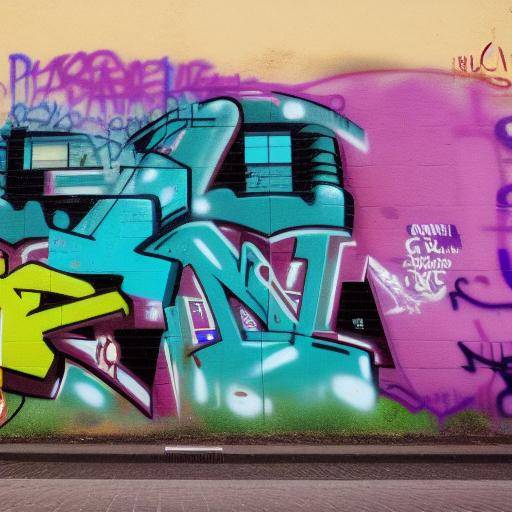
Urban art in Berlin is a fascinating microcosm of cultural and alternative expression that has captured the attention of the world. From vibrant graffiti at the Berlin Wall to street art facilities in the neighborhoods, the German capital is a resonant canvas that narrates history, challenges norms and celebrates diversity. In this article, we will thoroughly explore the cultural lessons that can be drawn from urban art in Berlin, from its history to its impact on German culture and how it has shaped a unique and powerful artistic community.
Introduction
Berlin, a city deeply rooted in European history, has emerged as an epicenter of world-wide urban art. Since the fall of the Berlin Wall in 1989, urban art has flourished in urban spaces, becoming a form of vital expression and a channel for the voices of the city. In this article, we will venture to explore the origins, evolution and meaning of urban art in Berlin, immersed in the cultural and alternative richness that has shaped not only the city, but also the contemporary German identity. Join us on this journey through the colors, shapes and messages that populate the streets of Berlin.
History and Background
Urban art in Berlin has its roots in a tumultuous history and a deep division that marked the city for decades. From the construction of the Berlin Wall in 1961 until its fall in 1989, the old scars and new possibilities manifested in the form of graffiti, murals and artistic expressions that related the experiences of a divided and reunified city. The alternative culture that emerged in the marginalized districts of Berlin provided a canvas for protest, personal expression and unbridled creativity in a context of political and social repression.
Urban art became a way of telling uncounted stories, challenging established norms and promoting union and resistance. Over time, Berlin was transformed into a laboratory of artistic experimentation, where artists, activists and citizens found freedom of expression on the walls and public spaces of the city. The fall of the Berlin Wall marked a crucial turning point that freed the creative potential of the city and turned Berlin into a magnet for artists and urban art enthusiasts around the world.
Analysis in Deep
Today, urban art in Berlin is a living reflection of its history, culture and society. The streets of the city are impregnated with street art that addresses a multitude of themes, from politics and identity to satire and social activism. Local and international artists have contributed to the wealth and diversity of the urban art landscape in Berlin, making the city an outdoor museum that challenges traditional art conventions and envelops its viewers in a visual and emotional dialogue.
Urban art in Berlin is not only an aesthetic expression, but also a driving force for change and cultural transformation. It has served as a catalyst for urban regeneration, the promotion of intercultural dialogue and the celebration of diversity. The graffiti at the Berlin Wall has acquired an iconic status as a symbol of resistance and hope, while the murals in the gentrified neighborhoods of West Berlin have led to debates about gentrification, cultural appropriation and local identity.
Urban art in Berlin has become an important tourist attraction, attracting avid visitors to explore the intersections between history, culture and contemporary art. The tours of urban art are popular among tourists, who seek to immerse themselves in the unique atmosphere of Berlin and know the stories behind every work of art. In addition, urban art has inspired community initiatives, civic participation projects and educational programs that encourage appreciation of art and cultural enrichment.
Comprehensive review
The impact of urban art in Berlin is not limited to the walls of the city, but extends to the collective psyche and the cultural identity of the Berliners. The influence of urban art is reflected in the flourishing of alternative art spaces, contemporary art galleries and urban art festivals that highlight the creative vitality of the city. This phenomenon has allowed the emergence of a diverse and dynamic artistic community that challenges artistic conventions and reimages the role of art in contemporary society.
The focus on urban art in Berlin has generated debates on the meaning of art, the ownership of public space and the role of art in the formation of identities and community relations. The interaction between urban art, architecture and the urban environment has encouraged discussions about aesthetics, collective memory and the preservation of cultural heritage. This enriching dialogue among citizens, artists and local authorities has led to collaborative initiatives that promote the integration of urban art in urban planning and the promotion of artistic accessibility for all.
Comparative analysis
By comparing urban art in Berlin with other forms of artistic expression in the city, such as classical painting or contemporary sculpture, it reveals a unique dynamic between tradition and the vanguard, history and innovation. While cultural institutions and traditional museums preserve the artistic legacy of Berlin, urban art challenges and transcends these borders, reaching a diverse audience and interacting with the street, public transport and community meeting spaces.
At the national level, urban art in Berlin serves as a benchmark for understanding contemporary German culture and its evolution in the twenty-first century. The combination of tradition and transgression, coupled with historical awareness and openness to new perspectives, reflects the spirit of German society as a whole. Urban art in Berlin illustrates the capacity of a community to rebuild its collective identity, challenging the cultural hierarchy and embracing diversity as an asset rather than a threat.
Practical Tips and Accessible Recommendations
If you are interested in exploring urban art in Berlin, here are some practical recommendations to make the most of this unique cultural experience:
- Take part in a guided tour of urban art to obtain detailed information about the works and their historical and cultural contexts.
- Visit alternative art spaces and contemporary art galleries to experience the diversity of urban art in Berlin.
- Connect with the local artistic community by participating in cultural events, creative workshops and collaborative art projects.
- Research the history and socio-political context of Berlin to better understand the significance and relevance of urban art in the city.
Exploring urban art in Berlin is a unique opportunity to discover the intersection between history, creativity and resistance in a vibrant and constantly changing urban environment.
Perceptions of Industry and Expert Reviews
The opinions of experts and professionals from the urban art industry in Berlin offer a valuable perspective on the impact and potential of urban art in the city. According to the renowned urban art curator, Anna Müller, "Berlin is a constantly changing canvas that reflects the struggles, hopes and dreams of its people. Urban art not only embellishs the streets, but also challenges conventional perceptions of art and culture, questioning who has the right to create and experience art." These enriching visions offer a deeper understanding of the underlying currents that drive urban art in Berlin and its resonance in the local and global community.
Case Studies and Real Life Applications
The applicability of urban art in Berlin extends beyond the visual expressions on the streets, integrating into projects of urban revitalization, artistic education and intercultural dialogue. A notable example is the community art project in the Kreuzberg neighborhood, where residents collaborated with local artists to embellish public spaces and promote social cohesion. This project not only transformed the appearance of the neighborhood, but also fostered a sense of belonging and pride among its inhabitants, consolidating the importance of urban art as an agent of positive change in everyday life.
Future Trends and Predictions
The future of urban art in Berlin promises to continue challenging artistic and cultural boundaries, opening new paths of exploration and expression. With the growing awareness of the importance of urban art in the configuration of inclusive and enriching urban environments, the city is expected to remain a global benchmark for street art and alternative culture. Interdisciplinary collaborations, the integration of urban art into sustainable urban development projects and the expansion of opportunities for emerging artists will be key trends that will shape the landscape of urban art in Berlin in the years to come.
Conclusions and FAQs
In short, urban art in Berlin is not only a reflection of its tumultuous past, but also a catalyst for innovation, inclusion and change. Through the exploration of urban art in Berlin, we have been able to glimpse the many layers of meaning, creativity and resistance that permeate the streets of the city. The diversity, vitality and relevance of urban art in Berlin are testimony to their ability to inspire, challenge and unite communities at the local and global levels.
Frequently Asked Questions about Urban Art in Berlin
1. What is the role of urban art in defining Berlin's cultural identity?
Urban art has played a significant role in the evolution of Berlin's cultural identity, serving as a means of expressing the history, diversity and aspirations of the city.
2. What is the relationship between urban art and politics in Berlin?
Urban art and politics are closely intertwined in Berlin, as many works reflect political, social and cultural themes, serving as forms of protest and expression for the community.
3. How has the city's approach to urban art evolved since the fall of the Berlin Wall?
Following the fall of the Berlin Wall, the city has adopted a more inclusive and collaborative approach to urban art, recognizing its importance in promoting cultural diversity and promoting citizen creativity.
4. What are some current initiatives that promote urban art in Berlin?
Berlin hosts a variety of initiatives that promote urban art, including festivals, artists' residences and community projects involving local and international artists.
5. How can urban art in Berlin influence other cities and communities around the world?
Urban art in Berlin offers important lessons on the transformative capacity of art in urban environments, serving as inspiration for other cities and communities seeking to take advantage of the potential of public art.
6. What impact does urban art have on the tourist image of Berlin?
Urban art in Berlin has contributed significantly to the city's tourist image, attracting interested visitors to explore the cultural and artistic wealth of the German capital.
In conclusion, urban art in Berlin is a living witness to the ability of art to transform, unite and transcend physical and cultural barriers. As we continue to explore the cultural lessons that emanate from the creative heart of Berlin, we not only celebrate its legacy, but also draw on its ability to reinvent, challenge and entertain present and future generations.
External Links:
- "The Street Artists of Berlin" - The Culture Trip
- "Art and Politics in Berlin" - Berliner Zeitung
- "10 Must-See Street Art Spots in Berlin" - Culture Travel
We hope this article has been an enriching and stimulating experience in your exploration of urban art in Berlin!

